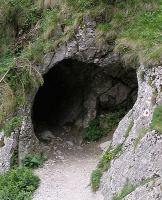 |
| Nicaragua 1 |
Among the many pre-columbian stone statues of Nicaragua there are two which are unique in that they depict bearded men. As is well known, the Central American natives had little, or no facial hair. This being the case, where did they find the inspiration for a bearded man? I believe that the source for these figures was not an American one, but was rooted in the early culture of Mesopotamia.
I have earlier suggested that the Jaredite capitol of Moron was located somewhere on the Pacific coast of Nicaragua, Honduras or El Salvador. Later a middle Jaredite king, by the name of Lib, built a great city "at the place where the sea divides the land (Ether 10:20)" which I think was near present day Granada, Nicaragua. This is near the source area of these statues. I have also theorized that the abundant stone statuary of this area is of Jaredite origin.
Is there any evidence for this hypothesis? I believe that there is, but first let us retrace the Jaredite history. The Jaredites originated at the Tower of Babel in what is now called the Sumerian civilization. They had been fully immersed in that culture and took many of the Sumerian customs and practices with them to the new world; practices such as stepped pyramids, written records, Sumerian religion, and a governing monarch. One of the Sumerian cultural practices was a full and well dressed beard. We see this illustrated repeatedly in the early Sumerian statuary (see images below).
 |
| Nicaragua 2 |
After their departure from Babel, the Jaredites traveled eastward across Asia, eventually crossed the Pacific, and settled in Central America. As they passed through the vastness of Asia, stragglers, the aged, and the ill and infirm were left behind. These groups established colonies which eventually formed the nucleus of the east Asian population. Genetically, these east Asian peoples were Mongoloid. Knowing this, we can infer that the Jaredites in part, or in full, were also genetically Mongoloid. This is probably the reason that the modern Native American populations exhibit east Asian DNA.
If the Nicaraguan statues are indeed of Jaredite origin, as I have suggested, we should find some of their cultural practices depicted in the art work. This may be the case with the bearded statues. Some have suggested that they represent a “duckbill” mask, but I don't think that this is logical. As one can easily see, the depiction of a bearded individual is much more reasonable.
 |
| Tuxtla Statuete |
Another bearded Olmec figurine (the Tuxtla Statuete) was found in Mesoamerica and may be related to the Nicaraguan statuary. Again the archaeologists have interpreted this as a “duckbilled” figure, but it seems to me that this is a stretch of the imagination. These figures more likely represent early historical bearded individuals among the Jaredites who lived before facial hair disappeared from the gene pool.
Another interesting comparison is the nudity of the Nicaraguan statues. This was a cultural trait of the Sumerians. The Sumerian priests, who served in the temples, were often depicted in the nude. It seems that nudity, to them, whether mistaken or not, represented purity and innocence. Is this the case with the Nicaraguan statues as well? Were they following ancient mid-eastern traditions? I believe there is a good possiblity that they were and that the Nicaraguan statues are indeed a Jaredite product.
 |
| Sumerian 1 |

